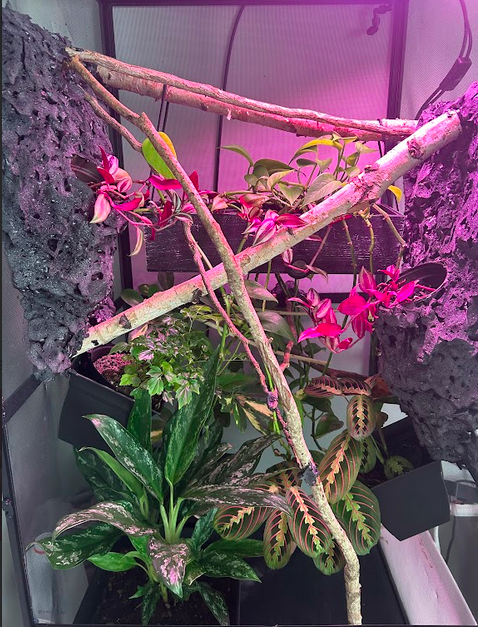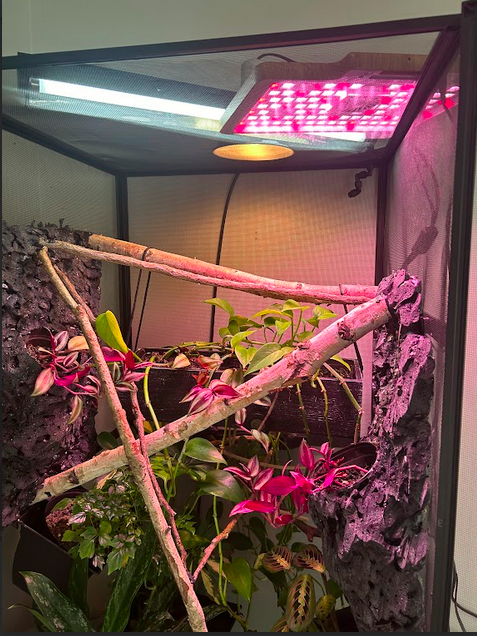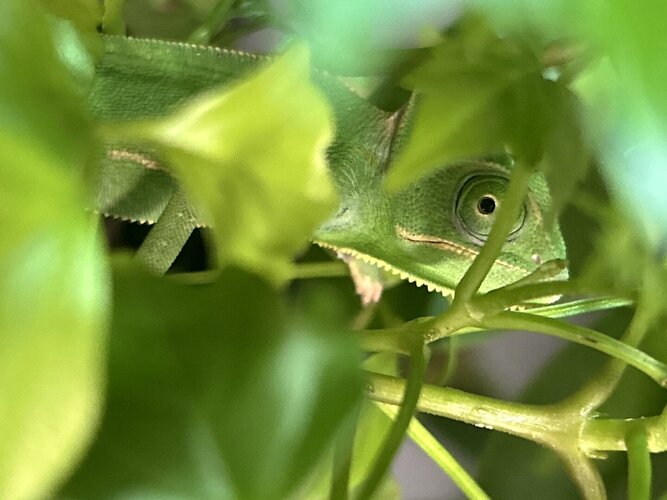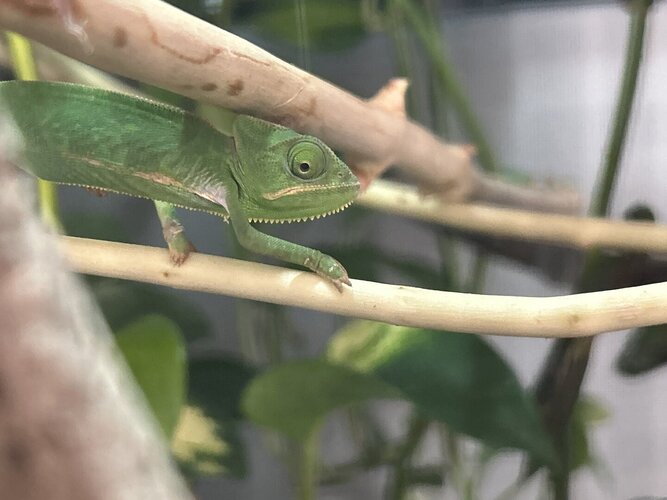lecaméléon
Member
I'm so thrilled and filled with anticipation! It's hard to believe that it was just yesterday when I meticulously set up my chameleon's cage, ensuring that every detail was perfect. Now, I feel fully prepared and ready to welcome my male veiled chameleon from FramsChams, who will be arriving tomorrow. However, I would greatly appreciate some advice and guidance from experienced chameleon owners to ensure that I provide the best care for my new companion.
Let me provide you with all the specifics of my setup, in case you need them. My chameleon's enclosure measures 24x24x48, providing the minimum for his species. I have carefully selected various plants to create a natural and stimulating environment for him. Additionally, I have installed a zoo med reptisun t5 light to provide him with the necessary UVB rays for his overall health and well-being.
To maintain the ideal temperature gradient, I have set up a basking spot at 86.7°F, allowing him to thermoregulate effectively. The ambient temperature in the enclosure is maintained at a comfortable 70.4°F. For nighttime, I aim to achieve a humidity level of around 60% and have decided to invest in a fogger to ensure consistent and appropriate humidity levels. During the daytime, I maintain a humidity level of 40%, which is essential for my chameleon's respiratory health.
II have encountered a setback with a leaking fogger. However, I have returned it and a new fogger will be arriving tomorrow, the same time as the arrival of my chameleon. Additionally, I plan to introduce another umbrella plant and a Dracaena Janet Craig to further enhance the aesthetics and provide additional hiding spots for my chameleon.
To ensure proper hydration, I have invested in a Mistking system, which will provide regular misting sessions for my chameleon. Furthermore, I have a drainage tray in place to prevent any excess water from accumulating in the enclosure.
In terms of nutrition, I have carefully selected silk worms, dubia roaches, and crickets. These insects are gutloaded with collard greens, mangoes, papaya, and apples. To supplement him, I will provide Repashy LoD daily and Reptivite with D3 on a monthly basis.
Let me provide you with all the specifics of my setup, in case you need them. My chameleon's enclosure measures 24x24x48, providing the minimum for his species. I have carefully selected various plants to create a natural and stimulating environment for him. Additionally, I have installed a zoo med reptisun t5 light to provide him with the necessary UVB rays for his overall health and well-being.
To maintain the ideal temperature gradient, I have set up a basking spot at 86.7°F, allowing him to thermoregulate effectively. The ambient temperature in the enclosure is maintained at a comfortable 70.4°F. For nighttime, I aim to achieve a humidity level of around 60% and have decided to invest in a fogger to ensure consistent and appropriate humidity levels. During the daytime, I maintain a humidity level of 40%, which is essential for my chameleon's respiratory health.
II have encountered a setback with a leaking fogger. However, I have returned it and a new fogger will be arriving tomorrow, the same time as the arrival of my chameleon. Additionally, I plan to introduce another umbrella plant and a Dracaena Janet Craig to further enhance the aesthetics and provide additional hiding spots for my chameleon.
To ensure proper hydration, I have invested in a Mistking system, which will provide regular misting sessions for my chameleon. Furthermore, I have a drainage tray in place to prevent any excess water from accumulating in the enclosure.
In terms of nutrition, I have carefully selected silk worms, dubia roaches, and crickets. These insects are gutloaded with collard greens, mangoes, papaya, and apples. To supplement him, I will provide Repashy LoD daily and Reptivite with D3 on a monthly basis.









